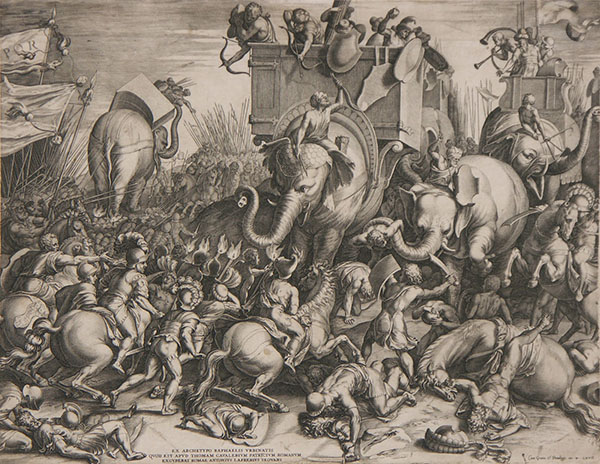Inspired by the “Battle of the Bastards” episode from Game of Thrones, we are looking at ancient accounts of bodies piling up during battle.
Carthaginian general Hannibal Barca, who had terrorized the Italian Peninsula for 16 years, fought his last battle at Zama against Roman general Scipio Africanus. This battle marks the first instance where we have two ancient accounts describing the piling up of bodies during a battle.
Polybius (c. 220-146 BC) was writing decades after the battle with access to documents, books, letters, and even veterans of the war against Hannibal. He tells us that during the course of the battle, Hannibal sent in his mercenaries first. However, the Carthaginians “shrank back in cowardly fashion” and did not provide any support to the mercenaries (15.13.3). When the mercenaries realized this, they turnaround and attacked the Carthaginians. The battle became a mess, with Romans, Carthaginians, and mercenaries all attacking each other. Eventually, the survivors of the latter group fled around the wings of the armies.
As the Romans moved forward, Polybius tells us it was
very difficult to pass over the ground without breaking his ranks owing to the quantity of slippery corpses which were still soaked in blood and had fallen in heaps and the number of arms thrown away at haphazard” (15.14.1-4).
A few hundred years later, Livy had access to Polybius and provided his own spin on the aftermath where
such heaps of dead men and their arms filled the place where the mercenaries had been standing a short time before that the Romans began to find it almost more difficult to make their way through them than it had been through the dense ranks of the enemy (30.34.9-13).
Modern commentary on this phenomenon is scant. Brian Todd Carey only provides ancient estimates for casualties with no mention of the piles of bodies in Hannibal’s Last Battle (2008). ((Brian Todd Carey, Hannibal’s Last Battle: Zama & the Fall of Carthage (Yardley: Westholme, 2008), 125.)) Other historians have similarly ignored them. ((Dexter Hoyos, Mastering the West: Rome and Carthage at War (Oxford: Oxford University Press, 2015); Ernle Bradford, Hannibal (New York: McGraw-Hill, 1981).)) Still, other historians recount what Polybius and Livy stated without any analysis, essentially accepting their descriptions of the piles of bodies. ((Eve MacDonald, Hannibal: A Hellenistic Life (New Haven: Yale University Press, 2015), 216; Sam Koon, “Phalanx and Legion: The ‘Face” of Punic War Battle” in A Companion to the Punic War, ed. Dexter Hoyos (Malden: Blackwell, 2011), 91-92; J. F. Lazenby, Hannibal’s War: A Military History of the Second Punic War[(Norman: University of Oklahoma Press, 1998), 224.))

What is likely difficult for the modern mind to comprehend is how men could fight and kill so long in a single spot that heaps of bodies could pile up in such a fashion. The detailed descriptions of Zama are unique in that they describe a scenario where 2 armies essentially became 3, with the mercenaries fighting for survival between the Romans and the Carthaginians. Hannibal needed to keep his troops stationary. Any retreat at this point in the battle would mean pursuit from his mercenaries and the Romans. Scipio surely saw an opportunity he would not squander. It was the perfect storm.
